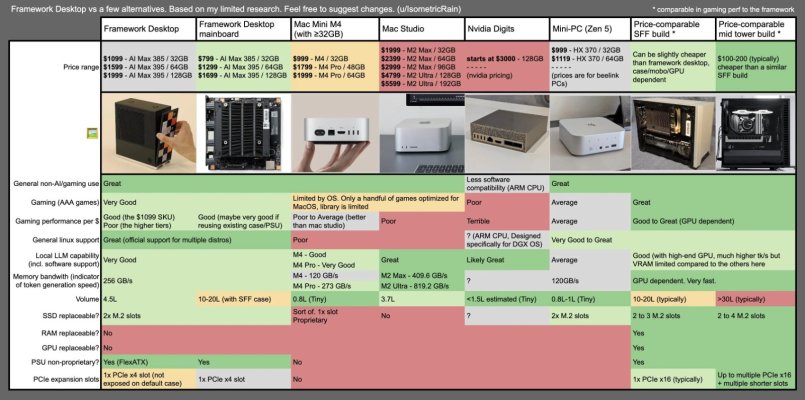Kaching999
Herald
AMD has shared more gaming benchmarks of its Ryzen AI Max+ 395 "Strix Halo" APU and its integrated Radeon 8060S GPU. AMD did share a few benchmarks on the AMD Ryzen AI Max+ 395 during its CES showcase, but now they have some more numbers available that compare the chip to the NVIDIA GeForce RTX 4070 laptop GPU. The numbers for the RTX 4070 were obtained on the ASUS ROG Flow Z13 laptop, and several games were used at 1080p High Settings. The numbers are native performance, so you aren't looking at upscaling or frame generation involved in these.
In all games tested (17 in total), the AMD Ryzen AI Max+ 395 was able to outperform the NVIDIA GeForce RTX 4070 laptop GPU. Now, it is not known what power configurations were used to test both systems, but here we can see the Ryzen AI Max+ 395 and its Radeon 8060 iGPU offering over 50% better performance and going as high as 68% in Borderlands 3. On average, this is a 23.2% improvement versus the RTX 4070, which is quite decent as it shows that AMD's integrated chips can now compete with high-end/mainstream laptop GPUs.


Original article: https://wccftech.com/amd-ryzen-ai-m...faster-than-rtx-4070-1080p-gaming-benchmarks/
News Source: @uzzi38
In all games tested (17 in total), the AMD Ryzen AI Max+ 395 was able to outperform the NVIDIA GeForce RTX 4070 laptop GPU. Now, it is not known what power configurations were used to test both systems, but here we can see the Ryzen AI Max+ 395 and its Radeon 8060 iGPU offering over 50% better performance and going as high as 68% in Borderlands 3. On average, this is a 23.2% improvement versus the RTX 4070, which is quite decent as it shows that AMD's integrated chips can now compete with high-end/mainstream laptop GPUs.
Original article: https://wccftech.com/amd-ryzen-ai-m...faster-than-rtx-4070-1080p-gaming-benchmarks/
News Source: @uzzi38






